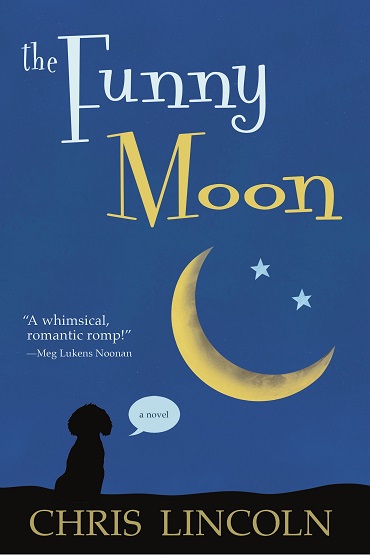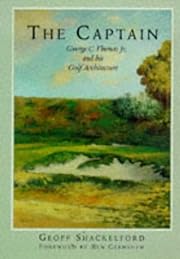 We’ve had quite a run of golf design books of late. First there was the deep dive into The Golf Architecture of Donald Ross by Bradford A. Becken, Jr. Then Richard Mandell’s heady Principles of Golf Architecture.
We’ve had quite a run of golf design books of late. First there was the deep dive into The Golf Architecture of Donald Ross by Bradford A. Becken, Jr. Then Richard Mandell’s heady Principles of Golf Architecture.
This time out, two more, but far easier to tackle. The word “fun” applies to both, both in the reading, and as a key thematic element: each book in its own way emphasizes that the best golf designs should lead the player to some level of fun. As opposed to torment.
Hence our title above, a quote from Chi Chi Rodríguez cited in neither Geoff Shackelford’s Golf Architecture for Normal People (Tatra Press, $30) nor Peter Gray’s Golfing the British Isles: The Weekend Warrior’s Companion (Triumph Books, $35), though both are festooned with other quotes pertinent to the game.
Shackelford was so taken with this one by architect George Thomas that he cites it twice within 40 pages: “In speaking of courses, each man believes that his own is far and away better than most others…he brings to mind the niblick shot he played in such and such a match; where else could that have been done? He saw Hagen take a 78 on a course, and no one can prove to him that they have a better layout at so and so.”
As enjoyable as his scattering of quotes are throughout this brisk volume, Shackelford more than holds his own: “… throughout golf history, select killjoys have successfully imposed a perverse belief that great courses are directly tied to their scoring resistibility.”
Because of this, he believes, “The conversation around what genuinely makes for a great course needs a reboot,” and hence the subtitle of the book, “Sharpening Your Course Design Eye to Make Golf (Slightly) Less Maddening.”
Shackelford is a staunch fan of The Golden Age of Golf Design, which is also the title of one of his now dozen books, mostly on the same subject. His goal here is simple, to “Put bloviating course architecture geeks—guilty here as charged—in their place for waxing about Tillinghast’s overuse of reverse-cambered double doglegs in his post-Shawnee years.”
Campaigning against cant and pomposity, and the tendency of golf-ranking lists to favor courses that appeal mainly to single-digit handicap raters, Shackelford creates (against his better judgment, he demurs) a rating system for the masses—or, at least, normal people.
It’s the R-E-D system:
> R for Remember: Can You Recall Something About Each Hole?
> E for Every Day: Could You play the Course Every Day and Never Tire of It?
> D for Dog Friendliness: A Course Where You’d Take a Dog for a Walk
The last category may suggest some of the archness that runs throughout the book; Shackelford has a lively and provocative prose style, as contemporary and entertaining as it is informative. As a sometime course designer himself (he was involved in the re-do of the George Thomas design at the Los Angeles Country Club, site of this year’s U.S. Open), he’s got the goods when it comes to course architecture.
So when he basically suggests it’s worth evaluating courses for the ways they engage you, rather than from pronouncements on high from so-called experts, it’s certainly worth a listen. There are even ways to evaluate courses, he shows in later chapters, that can help your game (provided you know how to access Google Earth). It will suffice here to say that this will likely be one of the most enjoyable golf reads you’ll have this year.
But Peter Gray’s book is right up there, too. Now, it might be said that Golfing the British Isles is a coffee table golf travel book, since aside from Gray’s writing the volume is replete with photography by Gary Lisbon, whom I happen to know and have played golf with in his native Australia. (That makes him no less of a sterling fellow and excellent golfer.) His splendid photographs readers can judge for themselves, but what is additionally pleasing about them is that they’re pertinent to Gray’s text.
And Gray’s text almost picks up where Shackelford’s leaves off, in that he has selected 34 courses to profile not because they’re on a best-of list (though many most certainly are), but because they’re the courses he thinks offers the most to weekend warrior players—those “must-play courses that even the weakest among us will enjoy.”
So although Gray includes most of the Open Championship rota courses in his chapters, he omits Royal Lytham & St. Annes for the simple reason that it’s too hard: “The English philosopher Thomas Hobbes once described human existence as ‘nasty, brutish, and short,’ and for me that sentiment also describes Royal Lytham & St. Annes.”
Not for him courses with excessive challenges. It’s not what he thinks the game is about: “Sorry, but you will never catch me playing Pete Dye’s masterpiece, TPC Sawgrass…. I do not question its greatness, but I prefer to have fun when I play golf.” And for Gray, an American, what could be more fun than golf in the British Isles, especially (but not exclusively) on links courses?
For a course to rank in Gray’s mind, it needs to possess four key elements: strategic options, beauty, character, and fun. Sound familiar? True, he doesn’t turn up any stunning surprises in his choices. His top ten? Royal Portrush, Royal County Down, Royal Dornoch, St. Andrews Old, Turnberry Ailsa, Royal Birkdale, Royal St. George’s, Ballybunion, Prestwick and Sunningdale Old.
Well, who can argue? You can try, but Gray has a commonsensical and disarming prose style that will likely win you over and leave you gazing at calendars wondering if there’s a promising time frame to mount up a trip abroad.
The chapters devoted to his selections seem to have just the right amount of historical background, highlights of particular holes, and a suitably reserved amount of his own travails on some of the tracks. After two days of golf at Lahinch and Tralee, for example, Gray was reeling from a fierce attack of the shanks. His companions said the only cure was to consume an entire bottle of Jameson 18-year-old. He did and then reeled to the floor. But the next day, the curse was lifted.
<<<>>>
 Looking for a good novel to take your mind off your rising handicap? The Funny Moon by Chris Lincoln (Rootstock Publishing, $18.99) should do the trick. Not a golf novel per se, the denouement does take place during a fiercely contested senior club championship match, but no spoilers here.
Looking for a good novel to take your mind off your rising handicap? The Funny Moon by Chris Lincoln (Rootstock Publishing, $18.99) should do the trick. Not a golf novel per se, the denouement does take place during a fiercely contested senior club championship match, but no spoilers here.
The story is really about a marriage in turmoil, partially because the wife can’t tolerate her husband’s obsession with his golf game. True, a preposterous notion that no reader here has likely ever encountered, am I right?
Fairly quickly after the great opening line—“Claire loved Wally, but lately she didn’t like him very much…”—the long-married Wally and Claire Scott separate, setting up the basic question of the rest of the story, will they or won’t they get back together? Will ad man Wally lose his last client, and his wife, while he tries to finish his novel and improve his golf game? Will Claire succumb to the charms of two persistent admirers (one, she discovers, under a curse that has given him a small penis), while trying to organize a fund-raiser for the local dog shelter?
Claire can actually communicate with animals and, while working on her massage clients, with those from the “other side.” A particularly rambunctious dog from the shelter often has arch commentary and suggestions for Claire. And after Wally gets conked on the head by an errant golf shot he is briefly inhabited by the late persona of Claire’s also rambunctious southern grandmother, who helps him get over his writer’s block.
 While this is all pretty light-hearted—and in keeping with our fun theme—the tale does have more than its share of insights into the idiosyncrasies of long marriages, one hilarious sex scene, and the golf. All in all, well-played.
While this is all pretty light-hearted—and in keeping with our fun theme—the tale does have more than its share of insights into the idiosyncrasies of long marriages, one hilarious sex scene, and the golf. All in all, well-played.
This piece first appeared in the 2023 Aug-Sept issue of Golf Oklahoma, in slightly different form.



